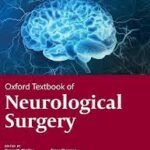Understanding Dexbrompheniramine Maleate in Modern Medical Applications
In the rapidly evolving landscape of modern medicine, Dexbrompheniramine Maleate stands out as an important compound with versatile applications. Traditionally known as an antihistamine used to alleviate symptoms of allergies, its potential uses have expanded considerably. Recent research has delved into its role beyond the usual scope, revealing intriguing possibilities, particularly in relation to rare conditions like Lesch Nyhan Syndrome. This neurogenetic disorder, characterized by self-mutilating behavior and neurological impairments, often poses complex treatment challenges. The ongoing investigation into the biochemical pathways affected by Dexbrompheniramine Maleate could lead to novel therapeutic strategies, offering hope where conventional treatments fall short.
The exploration into the bacteriological effects of this compound is yet another fascinating avenue. Bacteriology, the study of bacteria, plays a crucial role in understanding the diverse influences of pharmaceutical compounds on the human body. Researchers are increasingly interested in how Dexbrompheniramine Maleate might impact bacterial flora, particularly within the human microbiome. This interest aligns with a broader trend in medical science that emphasizes the interconnectivity of drugs, microbiota, and health. Such insights could redefine the application of existing medications, enhancing their efficacy and reducing potential side effects. This is reminiscent of the surprising discoveries often made with other common treatments, such as Monistat vaginal cream, which, though primarily used for fungal infections, has shown effects in unexpected areas of health.
Understanding the intricate interactions between pharmaceutical agents and biological systems is essential for advancing medical practice. As new insights emerge, they often pave the way for innovative therapeutic avenues. For instance, the connection between antihistamines like Dexbrompheniramine Maleate and the treatment of rare syndromes, alongside their interaction with bacterial systems, could offer breakthroughs in personalized medicine. In this context, here are some potential benefits of this evolving understanding:
- Enhanced treatment protocols for rare genetic disorders like Lesch Nyhan Syndrome.
- Improved management of allergic reactions and associated complications.
- Potential reduction in bacterial resistance through novel drug interactions.
| Application | Description |
|---|---|
| Allergy Treatment | Used to alleviate symptoms such as runny nose and sneezing. |
| Lesch Nyhan Syndrome Research | Exploring potential new therapeutic pathways. |
| Bacteriological Studies | Investigating interactions with bacterial flora. |
Exploring Bacteriology Insights Related to Lesch Nyhan Syndrome
The intricate relationship between bacteriology and Lesch Nyhan Syndrome presents an intriguing field of study, as emerging research sheds light on microbial interactions that may influence the progression of this rare genetic disorder. Lesch Nyhan Syndrome, characterized by an overproduction of uric acid leading to severe neurological and behavioral disturbances, is primarily known for its genetic basis. However, recent insights suggest that microbial factors could play a role in exacerbating or potentially alleviating symptoms. Understanding the bacteriological landscape surrounding this condition could pave the way for novel therapeutic strategies and improve patient management.
In this context, the potential impact of dexbrompheniramine maleate emerges as a noteworthy avenue of exploration. While traditionally employed for its antihistaminic properties, dexbrompheniramine maleate’s influence on the immune response might intersect intriguingly with the microbial dynamics at play in Lesch Nyhan Syndrome. Its ability to modulate immune responses could alter the bacterial flora, thereby affecting the disease’s progression or symptomatology. Such interactions underscore the need for a multidimensional approach to studying bacteriology within the framework of genetic disorders, considering both pharmacological and microbial dimensions.
Further, the conversation around microbial influence is not restricted to pharmaceuticals alone. Products like monistat vaginal cream, although primarily designed for antifungal purposes, highlight the importance of maintaining a balanced microbial environment in various body systems. While not directly related to Lesch Nyhan Syndrome, the principles of microbial balance and its systemic implications resonate with the broader understanding of how bacteria may influence genetic disorders. Integrating these insights into clinical practice could enhance therapeutic outcomes, offering a more holistic view of patient care that acknowledges the intricate dance between human genetics and the microbial world.
Role of Monistat Vaginal Cream in Managing Infections
In the realm of managing infections, Monistat Vaginal Cream has been a notable solution, primarily for fungal infections like yeast infections. While primarily designed for vaginal use, its antifungal properties have drawn attention in broader bacteriology discussions, especially as researchers explore unconventional roles of familiar medications. The cream contains miconazole, an antifungal agent effective in disrupting the cell membrane of yeast cells, leading to their eventual demise. This same mechanism holds potential in exploring other opportunistic infections, where similar fungal or fungal-like organisms may play a role in exacerbating symptoms or complicating conditions in patients with complex disorders such as Lesch Nyhan Syndrome. According to recent studies, the potential systemic effects of topical treatments like Monistat could offer unexpected pathways for managing secondary infections often overlooked in traditional care approaches (source).
Though Monistat’s primary application remains in addressing vaginal yeast infections, its role in managing infections extends to understanding its potential in broader medical contexts. In exploring adjunct treatments for complex syndromes, its antifungal properties invite considerations about microbial environments that might influence the health of patients beyond the primary indications of the product. With Dexbrompheniramine Maleate, an antihistamine, being researched for its utility in neurological conditions, examining other medications for multi-faceted roles can open new therapeutic avenues. The interconnectedness of microbial presence and systemic symptoms in syndromes such as Lesch Nyhan Syndrome may eventually redefine the application of conventional treatments, making the study of these interactions crucial in ongoing medical research.
Future Implications of Dexbrompheniramine Maleate Research
The exploration of dexbrompheniramine maleate in the context of Lesch Nyhan Syndrome presents a fascinating avenue for future medical research, with the potential to unravel previously unexplored aspects of this rare condition. The intersection of bacteriology and pharmacology could lead to innovative therapeutic strategies. By understanding how dexbrompheniramine maleate interacts with bacterial ecosystems within the body, researchers can potentially uncover new ways to mitigate the neurological and physiological symptoms characteristic of Lesch Nyhan Syndrome. This research trajectory not only enhances our understanding of the drug’s multifaceted role but also paves the way for a broader examination of its implications in neurological disorders.
Furthermore, the advancements in the study of dexbrompheniramine maleate might inspire a reevaluation of its applications beyond Lesch Nyhan Syndrome. As scientific insights into the human microbiome grow, the implications of this drug in modulating bacterial populations could be significant. Discover how certain medications can impact intimacy. Explore common concerns and effects, such as interactions with alcohol. For detailed insights and answers to your questions, visit http://crucibletherapy.com/ to learn more. These findings may extend to related areas, such as the development of treatments involving monistat vaginal cream where bacterial balance is crucial. The possibility of dexbrompheniramine maleate influencing bacterial behavior offers a novel perspective that could transform the therapeutic landscape, potentially addressing a variety of microbiome-related health issues.
As research progresses, the role of dexbrompheniramine maleate in influencing bacteriology in patients with Lesch Nyhan Syndrome may redefine current treatment paradigms. The ongoing investigations could lead to personalized medical approaches, wherein bacterial profiles are tailored alongside pharmacological treatments for optimal outcomes. Such advancements would represent a significant leap in precision medicine, providing patients with more effective and targeted interventions. These future implications hold promise not only for individuals with Lesch Nyhan Syndrome but also for broader medical applications, potentially revolutionizing how we understand and treat bacterial interactions within the human body.
Information taken from:
- http://windsorestateshoa.com/how-long-does-cialis-20-mg-work.pdf
- http://midsouthfuneralpiper.com/levitra-20mg-vs-cialis-20-mg.pdf
- https://www.guttmacher.org/
- http://johns-team.org/how-to-get-the-most-out-of-cialis.pdf
- https://www.nice.org.uk/
- https://bestpractice.bmj.com/info/
- https://www.stanford.edu/
- https://www.smfm.org/
- https://www.drugs.com/
- https://www.mayoclinic.org/

 Anaesthesia books
Anaesthesia books Behavioral Science Books
Behavioral Science Books Cardiology Books
Cardiology Books Obstetric and Gynecology
Obstetric and Gynecology AMC Books
AMC Books Prepladder Notes
Prepladder Notes Stethoscope
Stethoscope Dermatology Books
Dermatology Books Neurosurgery Books
Neurosurgery Books Dentistry Books
Dentistry Books ENT Books
ENT Books Anatomy Books
Anatomy Books Biochemistry Books
Biochemistry Books Biostatistics Books
Biostatistics Books Plab Books
Plab Books Radiology Books
Radiology Books Surgery Books
Surgery Books